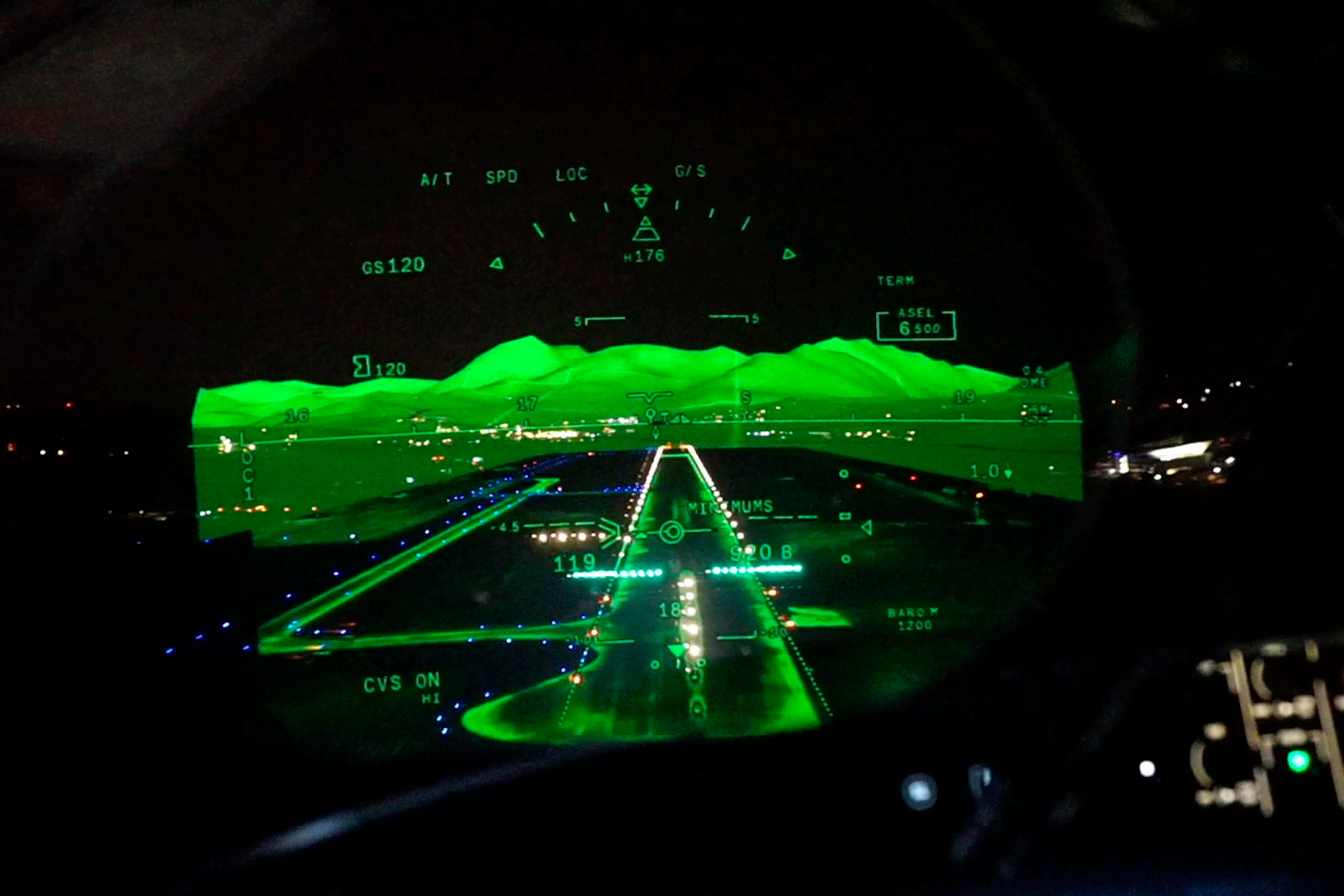|
The Dassault Falcon 900LX, Falcon 2000LXS and
Falcon 2000S have been certified by EASA and the FAA for an
enhanced flight vision system (EFVS) capability that greatly
improves access to airports in bad weather, providing operational
credit for poor visibility approaches down to 100 ft.
The new EFVS capability, provided through
Dassault Aviation�s FalconEye Combined Vision System (CVS) and its unique combination
of six fused sensors, was previously certified on the Falcon 8X
ultra-long range trijet following the completion of joint EASA/FAA
trials last year.

The FalconEye Head-Up Display
(HUD) shows separate synthetic, database-driven terrain mapping
and enhanced thermal and low-light camera images at the same time.
It also allows pilots to adjust the split between synthetic vision
system (SVS) and enhanced vision system (EVS) imaging areas to
suit visibility conditions, providing an unprecedented level of
situational awareness and allowing the crew to perform bad weather
landings with much higher levels of confidence, precision and
safety.
The FalconEye option has been available on the two-engine
2000LXS/2000S and the three-engine 900LX since October 2016 and on
the Falcon 8X since early 2017. The system will also be available
on the new Falcon 6X ultra widebody twinjet, which is due to enter
service in 2022.
The next enhancement to the FalconEye
option will be the addition of a dual head-up display
configuration that will support an EFVS-to-land capability,
allowing pilots to fly a full approach and land without requiring
natural vision to see the runway. The full approval of this
capability is anticipated next year.
|
Headlines: |
|
See latest
HD Video
Interviews,
Podcasts
and other
news regarding:
Dassault,
Falcon,
Elbit Systems,
FalconEye,
HUD,
CVS,
EFVS.
|

